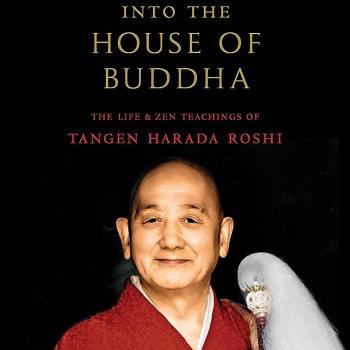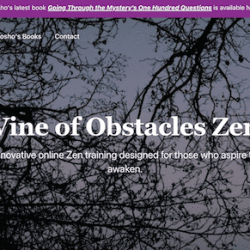
Mugai Nyodai , 1223-1298, a great practitioner, teacher, and woman.
At the recent conference, one teacher who had recently completed dharma transmission told me about her ceremony. Her teacher had her do the bowing practice with almost 150 names, including many of the known women great practitioners through the ages.
Despite the dogma of Zen, most Buddhists, including Zennists, through most of our history have apparently thought that women could not become truly enlightened and were more or less excluded. Although there were great practitioners who were women, mostly these women were not recognized. If you want to really sink into how bad it has been for women, read Bernard Faure’s The Power of Denial: Buddhism, Purity, and Gender. I just finished this and, whoa, it was much worse than I had known!
So although I think it very positive that there are many flowers blooming, many experiments, for now I’m staying with the traditional list of ancestors. Here’s why.
Granted, of the 83 ancestors whose names we chant here at Transforming Through Play Temple, all are men. Maybe. There is speculation that Prajnatara, Bodhidharma’s teacher, may have been a woman but the exception does little for gender fairness!
The movement to start including women in the lineage goes back about ten years or so when a number of American Zen groups began experimenting with modifying the lineage chant to include women.
Although the word “lineage” is not limited in meaning to the sense of direct succession, that is the meaning that has been most important in the Zen tradition so this development is no small thing.
One argument that supports the recreation of the lineage comes from modern scholars who are convinced that the lineage of the Indian ancestors, about twenty names, was most likely constructed in China in about the ninth century from famous Indian monks known in China but, given the limits of knowledge at the time, are pasted together in the wrong order and with large gaps. It isn’t “historically accurate” in our modern usage of the phrase.
So why not reconstruct a lineage that includes woman, makes an effort to right the wrongs of the past, give ancient womens’ names voice?
One reason is that to do so is to unintentionally cover up the sexism and misogyny of our tradition, suggesting that the past was better for women than it probably was.
One way to acknowledge the past is to do nothing but hold this situation in our hearts when we recite the lineage. Reciting 83 (or maybe 82) names of male ancestors, expresses something closer to the lived reality of the tradition, and requires a willingness to stay with feelings of anger, sadness, fear, and regret.
And resolve to uproot all of our tendencies to be blinded by our current cultural prejudices.
Maybe in this case we should just sit there and do nothing.
Comments welcome.











